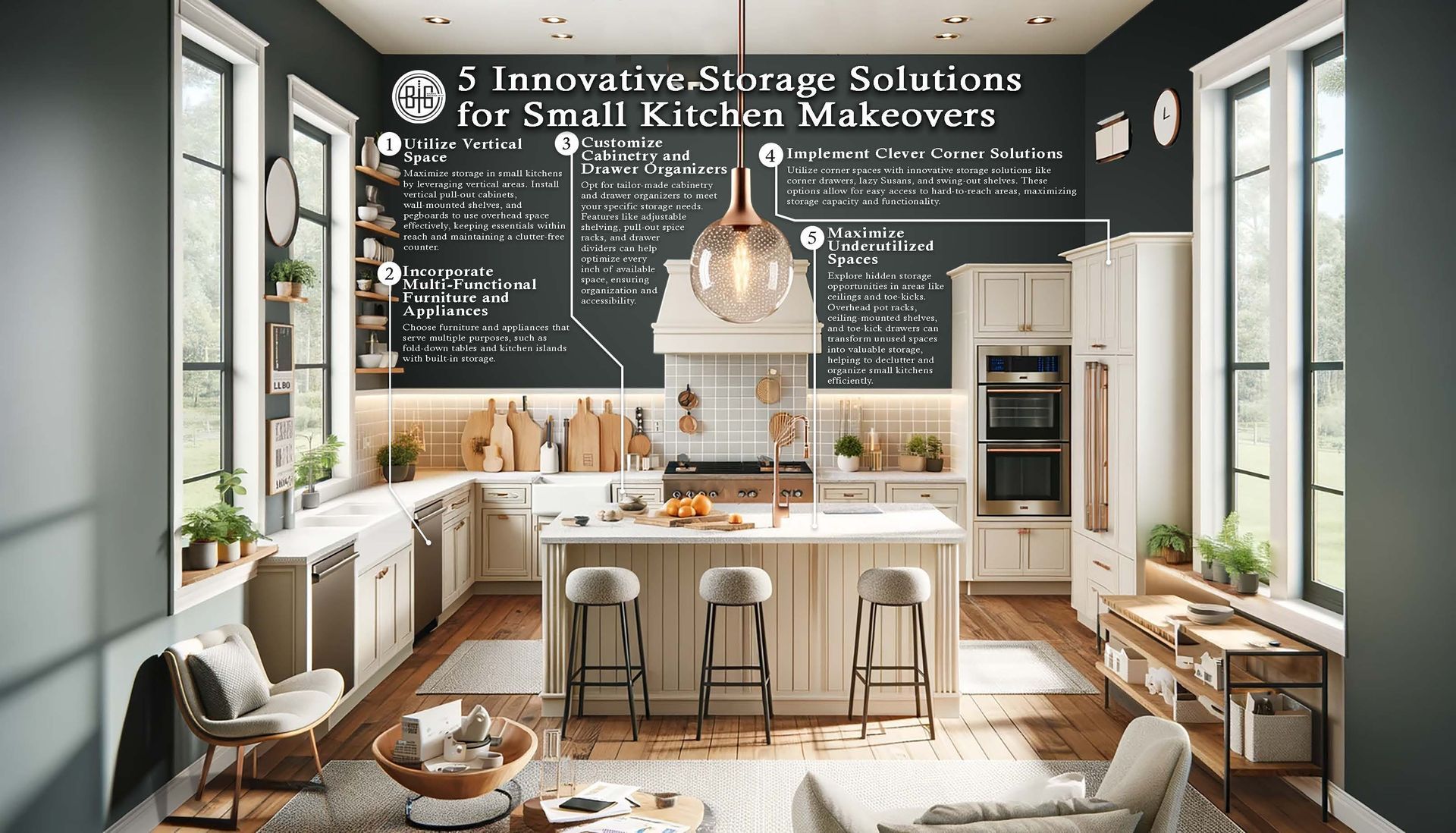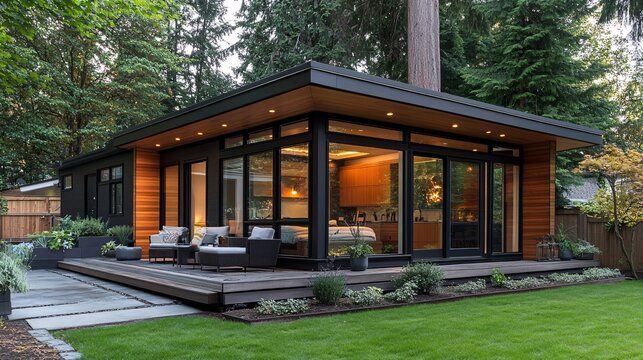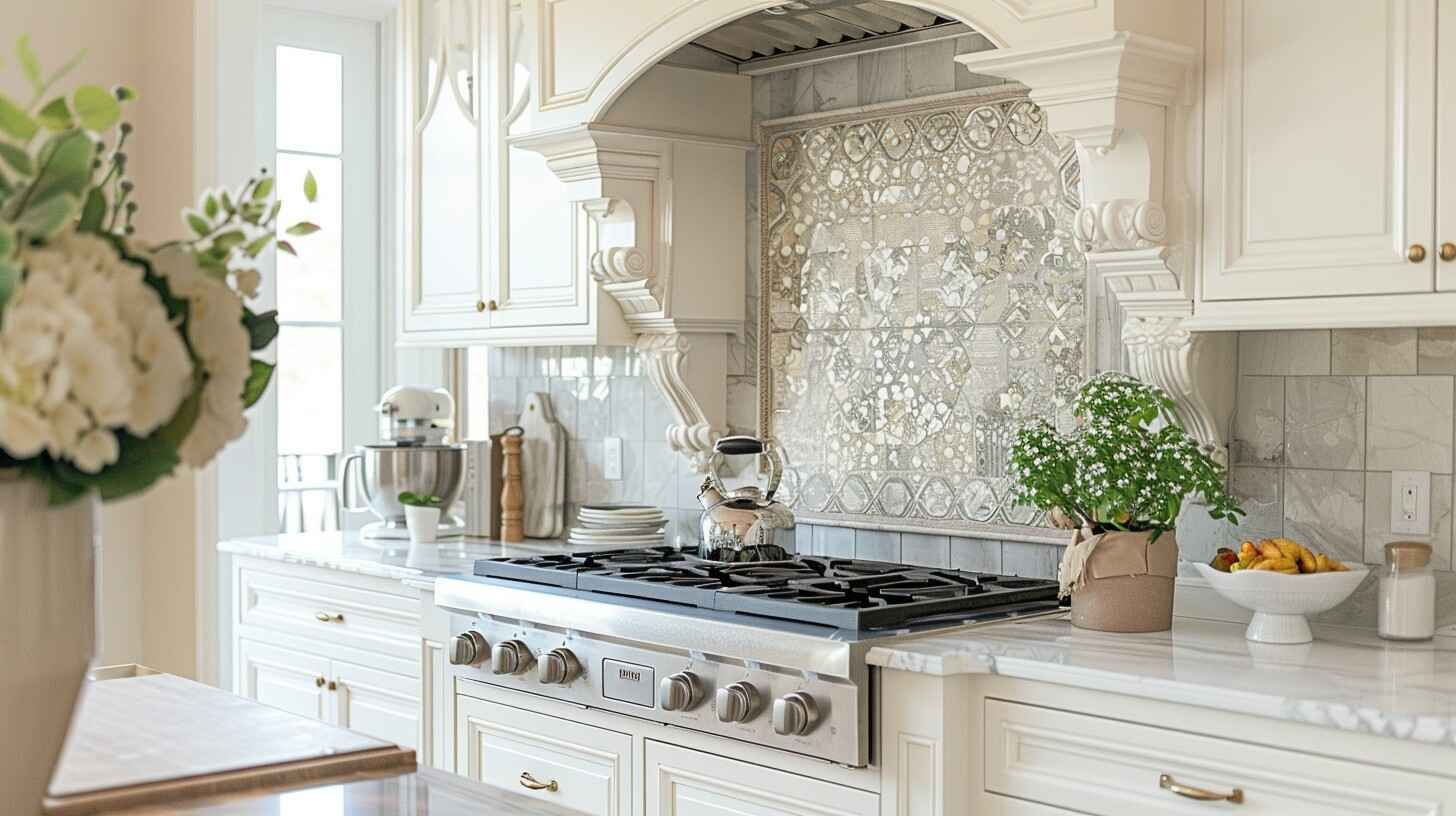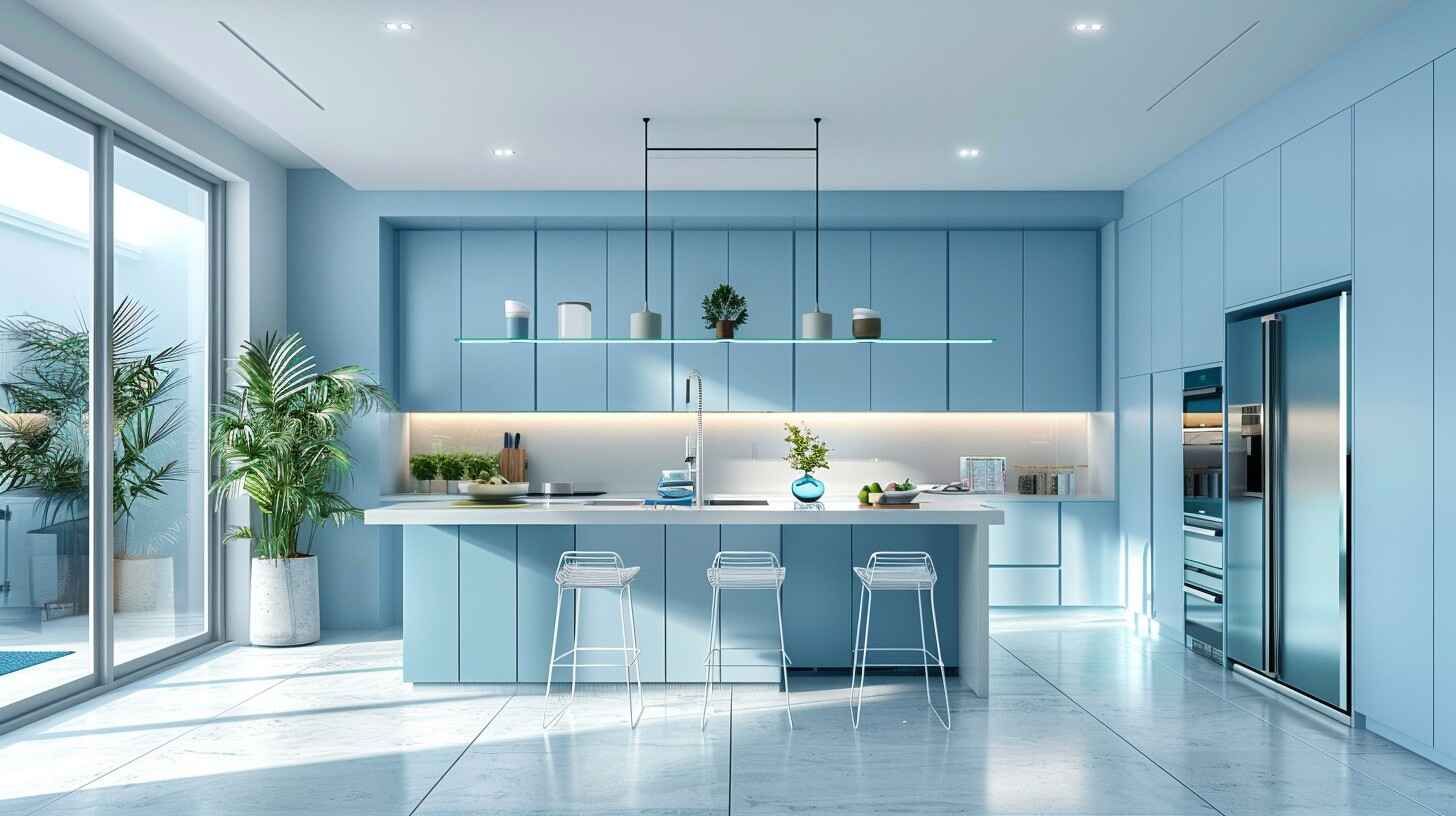Maximizing Space: Innovative Storage Solutions for Small Kitchen Renovations

In the realm of home design, the kitchen serves as the heart of the house, where meals are prepared, memories are made, and conversations flow. However, for those dealing with limited space, the dream of a functional and inviting kitchen can quickly turn into a daunting challenge. Small kitchen renovations present a unique set of obstacles, with every inch of space demanding thoughtful consideration to ensure optimal functionality without sacrificing style. At the forefront of these challenges lies the pressing need for effective storage solutions.
Limited storage space can hinder organization, create clutter, and impede workflow, ultimately diminishing the kitchen's usability and aesthetic appeal. From overcrowded countertops to inaccessible cabinets, the consequences of insufficient storage are keenly felt in small kitchens. In this blog post, we delve into the innovative storage solutions poised to transform compact kitchens, offering practical tips and creative ideas to maximize space utilization without compromising on style or functionality.
Utilizing Vertical Space
In small kitchen renovations, leveraging vertical space becomes paramount to optimizing storage capacity and maintaining a clutter-free environment. Vertical pull-out cabinets, strategically positioned wall-mounted shelves, and versatile pegboards offer ingenious solutions to capitalize on often-overlooked areas. By embracing these innovative storage options, homeowners can reclaim valuable real estate while keeping essential items within easy reach. Balancing functionality with aesthetics, it's crucial to choose storage solutions that complement the kitchen's design, integrating them seamlessly into the overall aesthetic for a cohesive and visually appealing space.
Multi-Functional Furniture and Appliances
Embracing the concept of multi-functionality in small kitchen renovations opens doors to ingenious space-saving solutions. From fold-down tables that double as prep areas to kitchen islands with built-in storage compartments, these innovative designs seamlessly blend practicality with style. Appliances with hidden compartments further streamline the kitchen's layout, offering discreet storage for utensils or small appliances. By integrating these versatile elements, homeowners can maximize space utilization while enhancing the overall functionality of their compact kitchen, transforming it into a hub of efficiency and convenience.
Customized Cabinetry and Drawer Organizers
Tailoring cabinetry and drawer organizers to suit individual needs is a cornerstone of effective small kitchen renovations. By opting for customizable solutions, homeowners can optimize storage capacity while maintaining organization and accessibility. Innovative options such as adjustable shelving, pull-out spice racks, and drawer dividers offer versatility and versatility, allowing for efficient use of every inch of available space. To maximize storage efficiency, consider factors such as kitchen layout, storage priorities, and frequency of use when customizing cabinetry and drawer organizers. Thoughtful customization ensures that every aspect of the kitchen is tailored to meet the unique requirements of its users, resulting in a well-organized and highly functional space.
Clever Corner Solutions
Corner space poses a unique challenge in small kitchen renovations, often underutilized and difficult to access. However, innovative storage solutions offer practical ways to overcome this obstacle and maximize storage capacity. From corner drawers that provide seamless access to otherwise inaccessible areas to lazy Susans and swing-out shelves that make the most of every corner, these solutions optimize space utilization while enhancing accessibility. By capitalizing on corner space, homeowners can significantly increase storage capacity, efficiently utilizing every nook and cranny of their compact kitchen for improved organization and functionality.
Maximizing Underutilized Spaces
Uncovering hidden storage potential within underutilized areas like the ceiling and floor can revolutionize small kitchen renovations. Innovative storage options such as overhead pot racks, ceiling-mounted shelves, and toe-kick drawers offer ingenious solutions to reclaim wasted space and increase storage capacity. By thinking beyond traditional storage locations, homeowners can capitalize on these overlooked areas to store bulky items, seasonal kitchenware, or seldom-used appliances, effectively decluttering countertops and cabinets. Embracing these creative storage solutions transforms previously overlooked spaces into valuable storage zones, optimizing organization and functionality in small kitchens.
Conclusion
In the realm of small kitchen renovations, innovative storage solutions play a pivotal role in optimizing functionality and aesthetics. From leveraging vertical space to customizing cabinetry and exploring underutilized areas, the possibilities for maximizing storage are vast. These solutions not only enhance organization and accessibility but also contribute to a more efficient and enjoyable cooking experience. As you embark on your own kitchen renovation journeys, it's crucial to prioritize innovative storage solutions to make the most of limited space. I encourage readers to delve deeper into these ideas, explore additional resources, and share their own experiences and insights on maximizing storage in small kitchens. By exchanging ideas and learning from one another, we can create inspiring and practical solutions for transforming compact kitchens into efficient and inviting spaces.



